

Damion Smy
GWM Cannon Alpha ute, Tank 300 HEV and Tank 500 recalled
15 Hours Ago
Toyota’s sportiest crossover is no firecracker. But does this make the boldest of bold C-HR styling statements an unattractive thing?
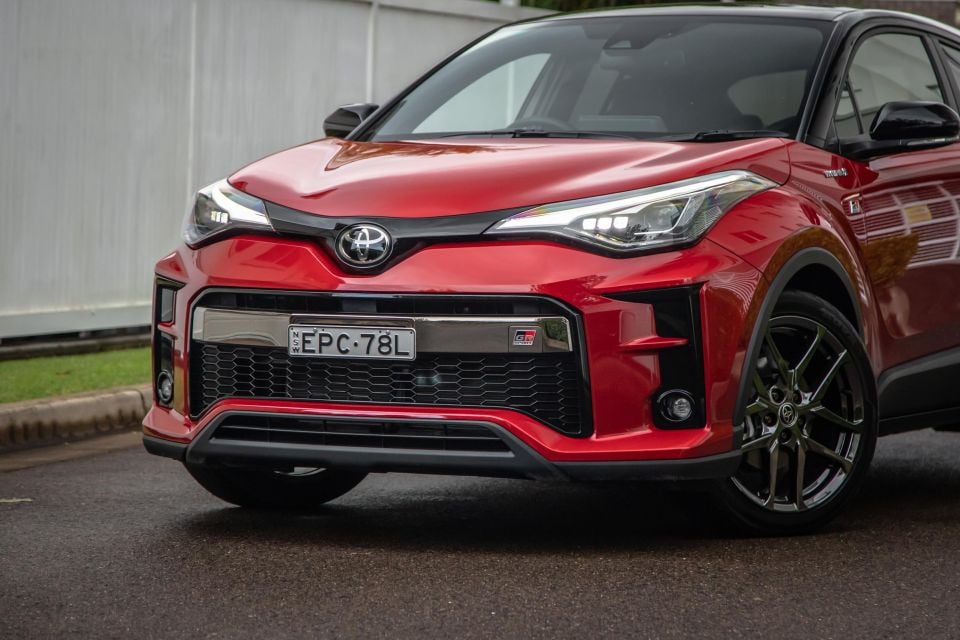
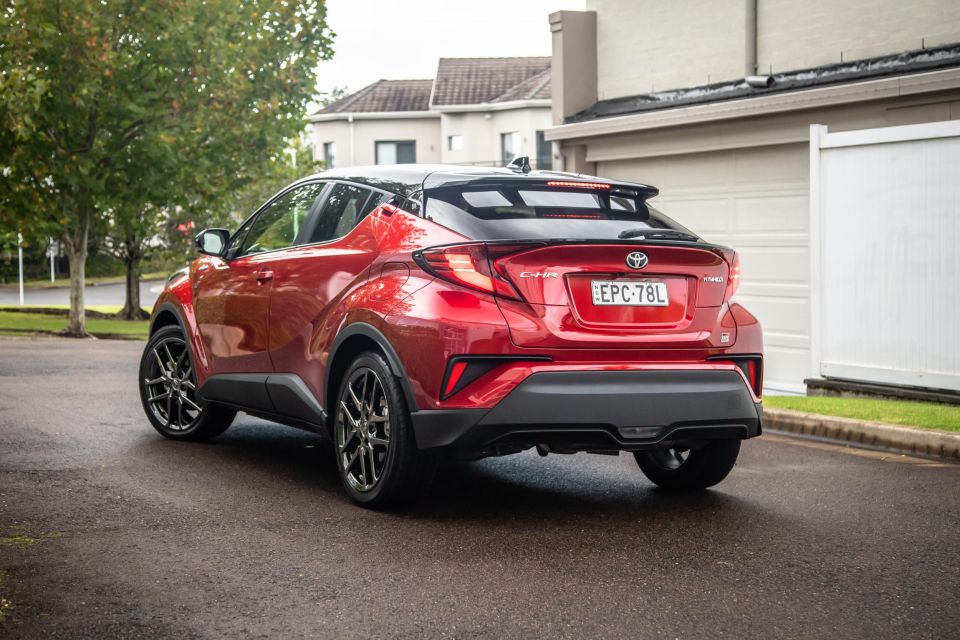

Journalist

Journalist


Journalist

Journalist
Where expert car reviews meet expert car buying – CarExpert gives you trusted advice, personalised service and real savings on your next new car.
The Toyota C-HR GR Sport Hybrid has quite a bit going for it.
When the facelifted range initially launched in 2019, it offered a hybrid engine which was, for a time, unique for its segment. Then in late 2020, its raciest iteration arrived; the first Toyota offered locally wearing the freshly minted GR (Gazoo Racing) Sport badge.
Style. Sportiness. Hybrid motivation. What’s not to like?
There are other Gazoo Racing-branded stablemates such as the GR Supra and GR Yaris, but what does the trumped-up C-HR ‘GR Sport’ actually represent? Does it mean mild performance augmentation? Or is it solely an expression of more athletic design?

The answer is – it depends on how you look at it.
One perspective is that the GR Sport is the flagship Koba, with which it exclusively shares its front-driven hybrid drive in the C-HR range, but in a leisure suit. And for identical outlay.
Another view is that the GR Sport is a GXL, on which its specifications are based, with both a sportier all-round treatment and a more powerful hybrid drive. It also comes complete with a significant price hike that just so happens to match that of the more luxury-focused Koba Hybrid.
Whether you compare it to low or high-grade C-HR alternatives, the GR Sport clearly marks its own territory on looks alone. But how warmed-up is the experience?
The only GR Sport in the C-HR line-up is $37,665 before on-roads. As mentioned, it’s identically priced to the Koba 2WD Hybrid with which it shares its powertrain.
However, that’s a fair hike over the entry GXL with which the GR Sport shares its core equipment, priced from $30,915 plus on-roads in petrol 2WD form. An AWD version of the GXL asks an extra $2000, at $32,915 before on-roads.
Opting for the nicer Koba grade lifts pricing to $35,165 (2WD) and $37,165 (AWD) respectively, with Toyota charging a premium for the hybrid 2WD format in Koba guise.
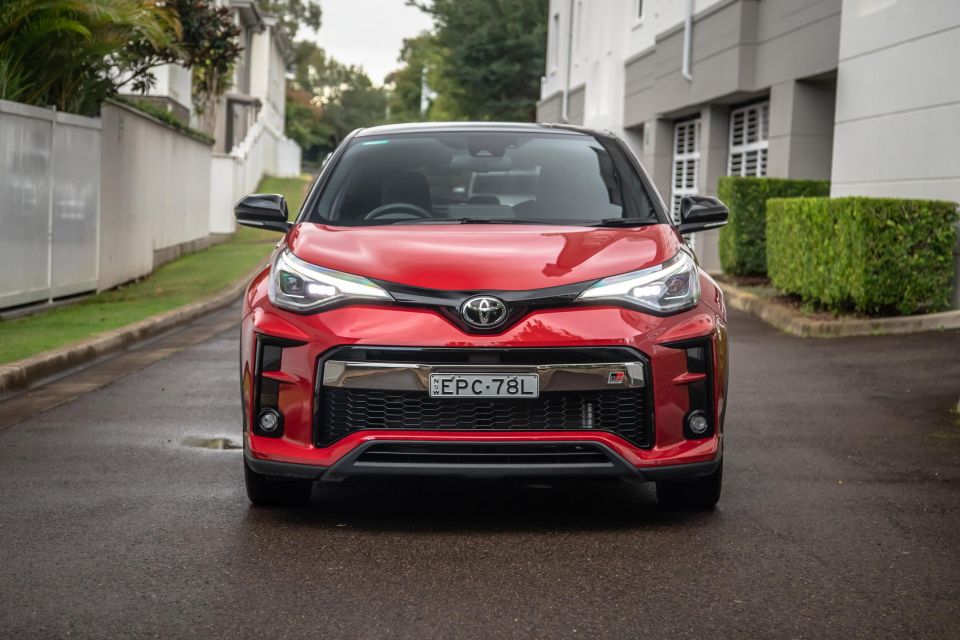
It comes in a choice of five single colours, with some metallics at a $500 upcharge and a further $450 for a different coloured roof yielding a two-tone effect. Using Toyota’s online configurator, our test car clocks in at $43,010 drive-away using a Sydney postcode.
Key hybrid-powered rivals (to varying degrees) include the soon-to-be-replaced Kia Niro Hybrid Sport at $43,890, the Mazda CX-30 X20 Astina AWD at $47,490 or the funky MX-30 G20e Astina at $40,990, the Mitsubishi Eclipse Cross Plug-in Hybrid ES at $46,490 and the Subaru XV Hybrid S at $40,700. All prices exclude on-road costs.
We’ve actually published comparisons between the Toyota C-HR Koba 2WD Hybrid and the Kia Niro Hybrid Sport as well as the Mazda MX-30 M Hybrid.
Further up the fiscal tree sits the related Lexus UX250h Luxury 2WD at $52,025 with a more potent 2.0-litre hybrid drivetrain, while roping in exclusively internal combustion options opens up your choice of small-SUV/crossover alternatives much more widely.
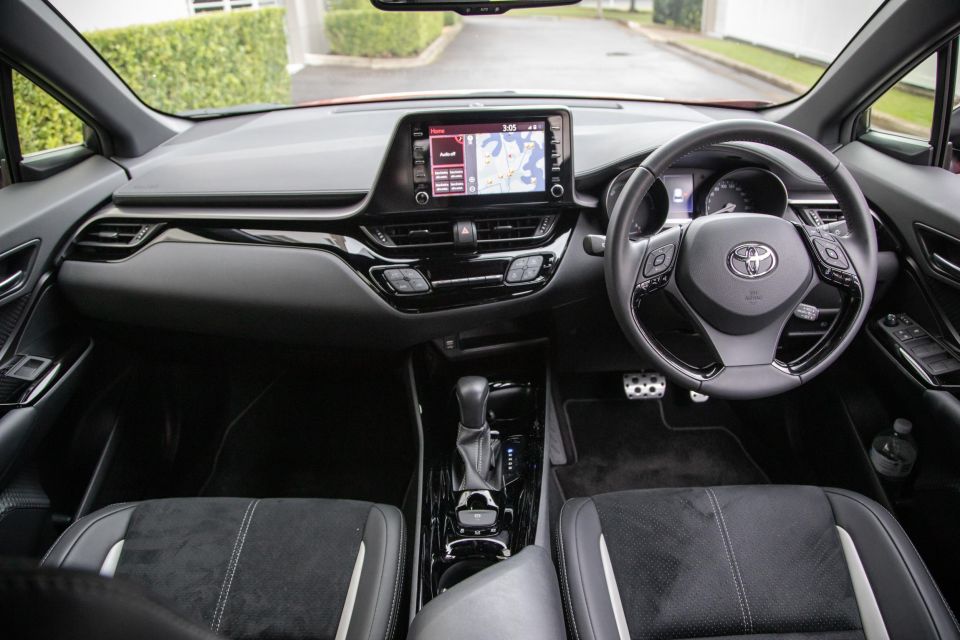
Buy your new car without the stress. It's fast, simple and completely free.

Great service from Travis and team, second time I have used this business would not hesitate to recommend them to anyone
Craig C.
Purchased a Ford Ranger in Sunshine Coast, QLD
CarExpert helped Craig save thousands on his Ford Ranger, now let us save you on your next new car.
Find a dealDespite the C-HR’s recent facelift, not much has changed in the crossover’s cabin since the model first launched globally in 2016. But on balance, its stylised design has aged fairly well and general presentation is quite decent.
The GR Sport brings suede-like and partial leather front seats, and initial impressions are that it’s more upmarket than the GXL on which it’s based. The added tonal variation is a nice lift to the regular C-HR’s excessively grey theme.
But settle in and dig around and its fairly basic nature reveals itself in places such as the mechanical seat adjustment and lack of features you’d expect in the price-topper variant. There’s no seat heating or cooling, no inductive phone charging, and the absence of parking sensors – as fitted to lower-grade variants – is a helluva head-scratcher.
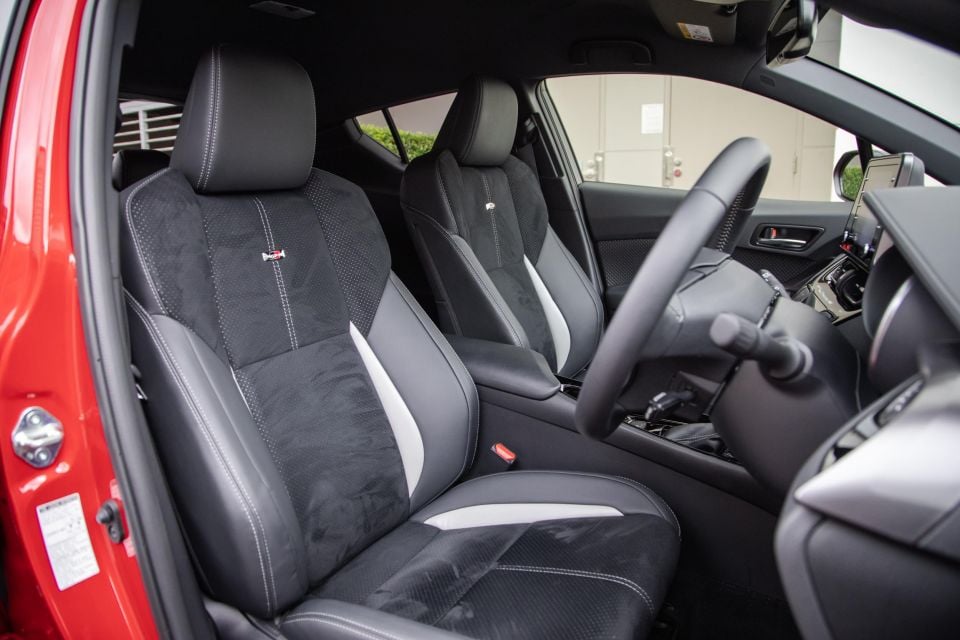

The pews in the similarly-priced Koba are not only fancier – leather trim, seat conditioning, electric power – they’re almost equally as sporty in shapeliness and support.
Neat pedals, silver stitching, shifter trim: the GR Sport spruce ups add to what’s a familiar C-HR fit-out. Surface materials are both cushy vinyl and hard plastic in the expected areas.
The analogue instrumentation is clear, if a bit plain and while there’s some fetching dimpled texturing on some interior panels the excessive use of piano black trim is, in our low-mileage tester, already subjected to scratchy wear and tear.

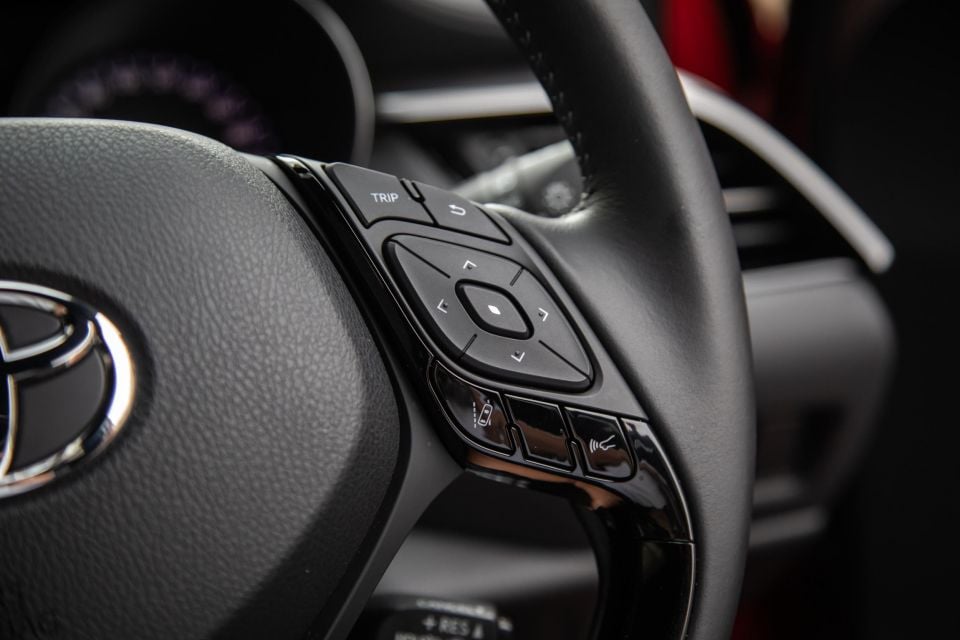
The manner in which the dash fascia, touchscreen and centre console snubs a natural sense symmetry is, erm, interesting. And there’s plenty of odd design in the details, too.
The gloss plastic wheel trim doesn’t do tactility much favour, there’s no logical place to store your phone outside of the cupholders, door pockets are so narrow that outside of a phone or wallet storage they’re fairly useless.
Despite this, the buttons and switchgear are much like the rest of the cabin: solid, well-made and logically arranged – bar the start/stop button propped blindly behind the wheel.
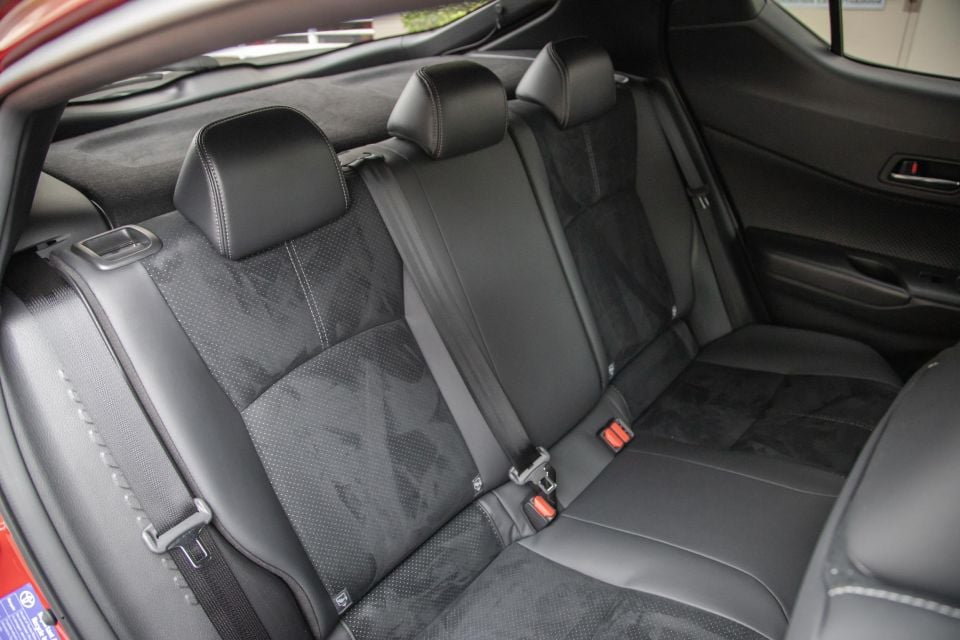

Infotainment is workmanlike in content and usability, though its physical shortcut button and knobs in the screen frame are, as always, handy.
Smartphone mirroring works fine, though proprietary sat-nav and essential reversing camera (remember there are no parking sensors) are a little low-rent by standards set by some rivals.
Row two accommodation is proof that C-HR really is a better fit as a lifestyle crossover than it is as family-friendly SUV. There’s not much in the way of legroom and even average-sized adults will feel hemmed in.
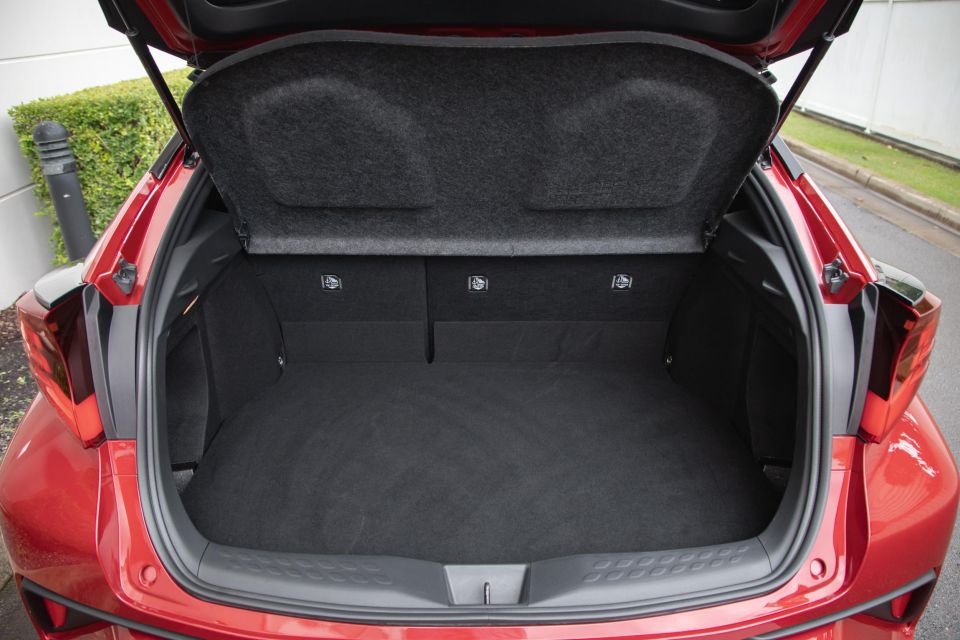
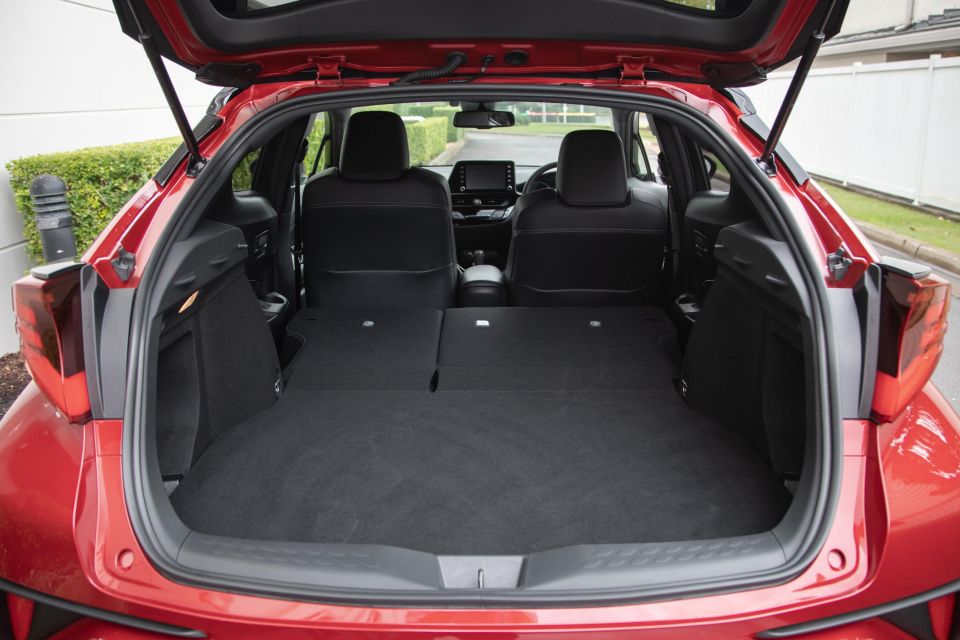
The upswept window also offers precious little outward vision and smaller occupants are going to feel quite claustrophobic.
The lack of row two conveniences such as air vents or device power is a letdown. The huge C-pillar also causes quite a blind spot when parking or checking for clear traffic to the left when exiting a side street.
Boot space is 318 litres with the 40:60-split fold rear seats in play. Its high-set floor houses a space-saver spare underneath. The boot’s usable if small for its segment, though the rear seatbacks stow to create a reasonably flat load area.
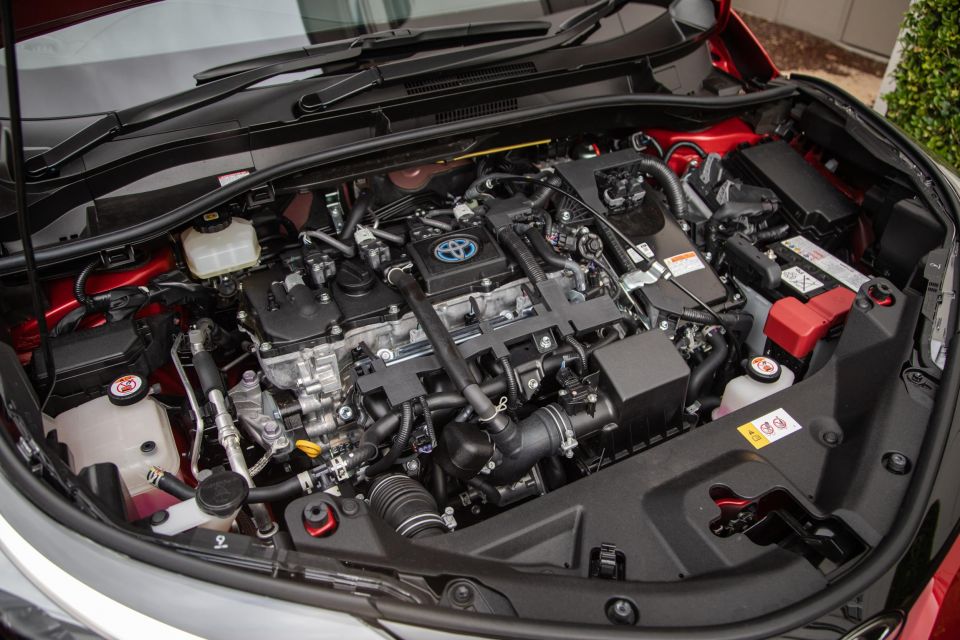
The C-HR Hybrid teams a 1.8-litre Atkinson cycle naturally-aspirated petrol engine with an electric motor and battery pack.
Total system power is 90kW; although, as its (strange) convention, Toyota does not advertise combined torque figures. The petrol engine itself produces 73kW and 142Nm, while Toyota’s e-CVT automatic transmission sends drive to the front wheels.
As we’ve pointed out in the past, a more powerful 131kW 2.0-litre hybrid is offered in C-HR overseas, as well as locally in the Lexus UX250h platform mate. On paper, the larger engine would certainly appear more fitting for this crossover’s GR Sport pitch here in Australia.
Advertised consumption is just 4.3L/100km combined, and it runs on regular 91 RON unleaded. With its 43-litre tank, Toyota claims a tank-brimmed range of around 1000 kilometres – driving conditions-dependent of course…
As mentioned, the GR Sport fits a 15mm lower suspension and a floor centre brace not featured on other variants. The electric power steering is also said to be “GR tuned”.
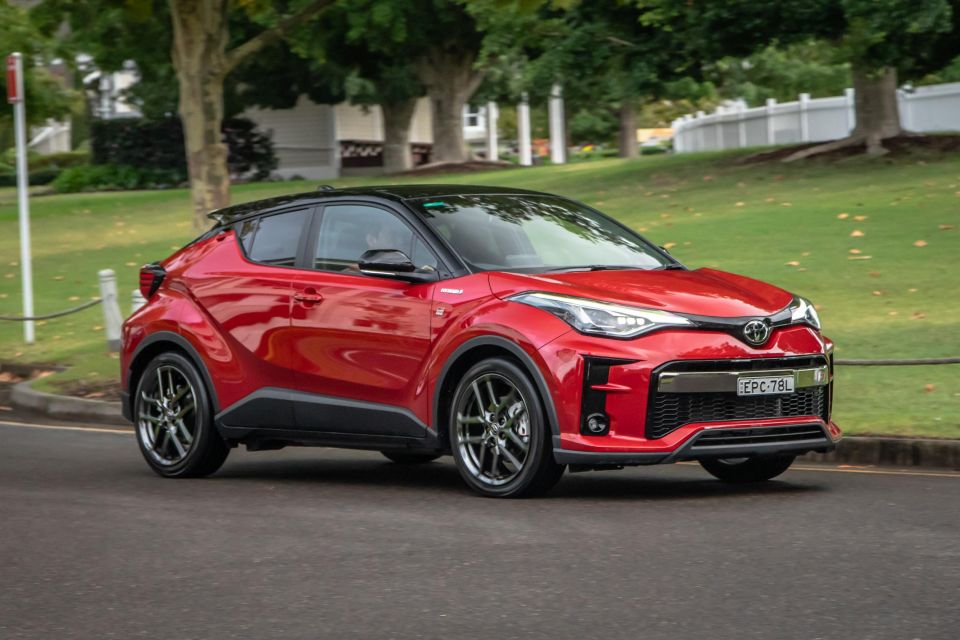
Sure, it shares its powertrain and platform with the well-regarded Corolla Hybrid and there are certainly fine traits to the C-HR GR Sport’s on road manner, particularly when it comes to ride and handling balance and the clarity of its steering – it’s just the raciest iteration of the C-HR doesn’t bring more fizz and enthusiasm to the party.
Yes, we’ve been complimentary about the keenness of the C-HR chassis in the past. And in isolation around town, it doesn’t really put much of a tyre wrong. But it’s not lively or fun; or at least there’s nothing about its character that encourages the sort of enthusiastic driving its appearance otherwise implies.
On the move, it feels a little heavy and ponderous, particularly the front end. The complimentary upshot is that the C-HR feels solid and robust by association.
Thing is, there’s not much going on under the bonnet that compensates for that solidity to bring much excitement to the driving experience, no matter how much you encourage it via a heavy right foot.
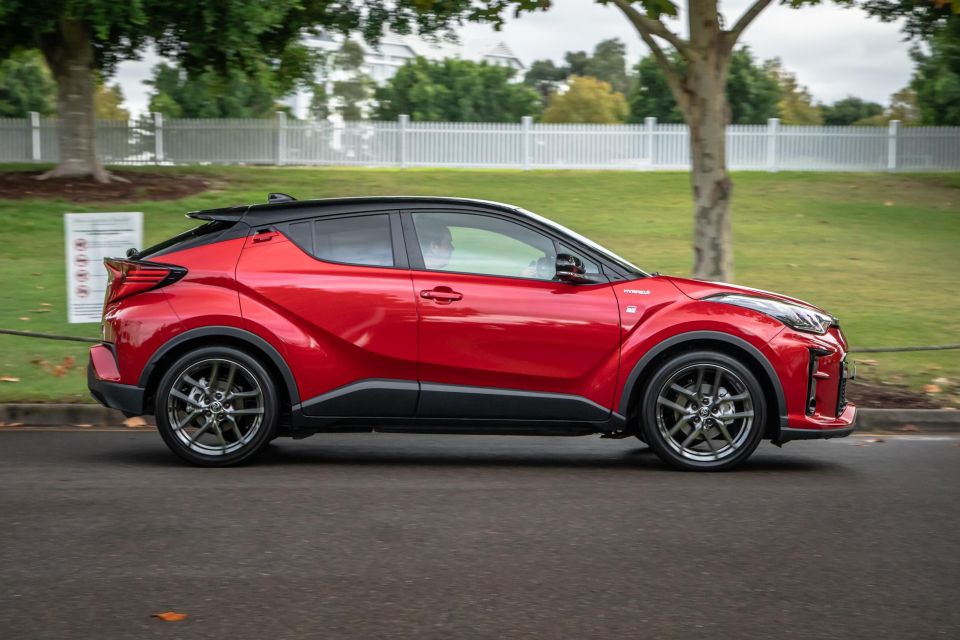
The hybrid system behaves exactly as a regular (non-performance-oriented) powertrain ought to. It defaults to EV mode on start-up, then the petrol engine chimes in without much provocation.
While it’s quite refined and polite at a gentle cruise, it gets a bit gruff and strained when tasked with anything more than moderate acceleration, and there’s little charm in the soundtrack as a trade-off.
In short, it is a far more fitting powertrain for a basic Corolla package. However, Toyota feels it’s perfectly fit for a GR Sport variation too.
That bespoke 15mm-lowered suspension doesn’t really bring much dynamic talent to the party either. Ditto whatever special bracing is fitted to this sporty variant.
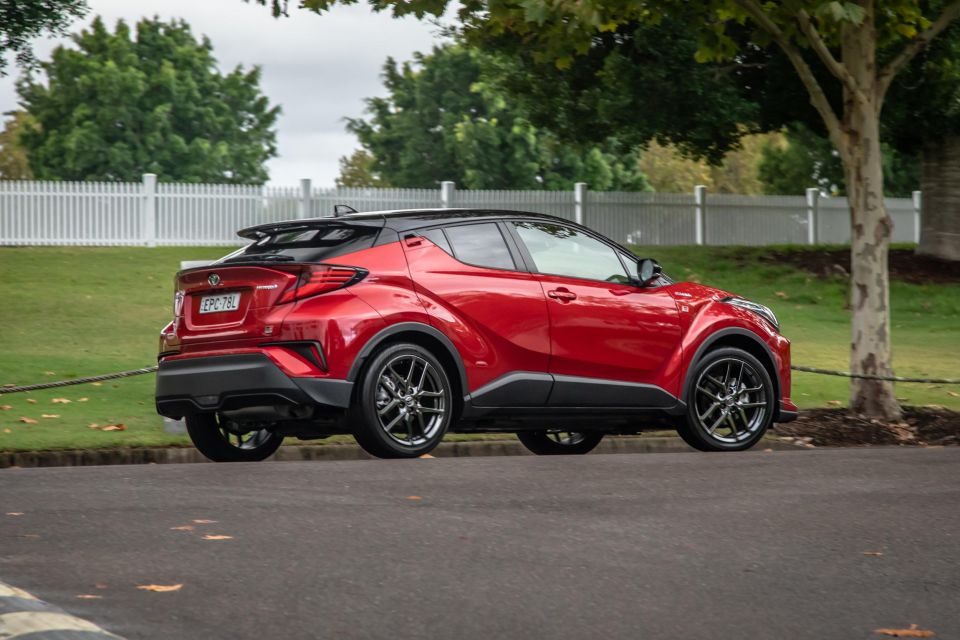
The GR Sport chassis feels moderately connected, although a little flaccid around the edges. Body control simply isn’t quite as taut as the form guide might suggest.
If there’s an improvement at play in connecting the driver to the road, it’s very mild and difficult to discern. There is a slightly fidgety ride quality as a default across small road imperfections – hit a speed bump and the front end tends to thud, perhaps due to the weight plied across the front axle.
Ditto the brakes. Sure, the calipers are painted white, but they don’t look or feel particularly powerful or focused and there’s a strange granular feel (and sound) at low speed. So there’s no net benefit here, either.
None of this detracts from the critical praise the regular C-HR has garnered, and it remains one of the nicer and friskier small SUVs or crossovers out there. It’s just, short of forensic direct comparison, the GR Sport doesn’t bring nearly enough added heat or sense of connection to the model line’s fundamental experience.
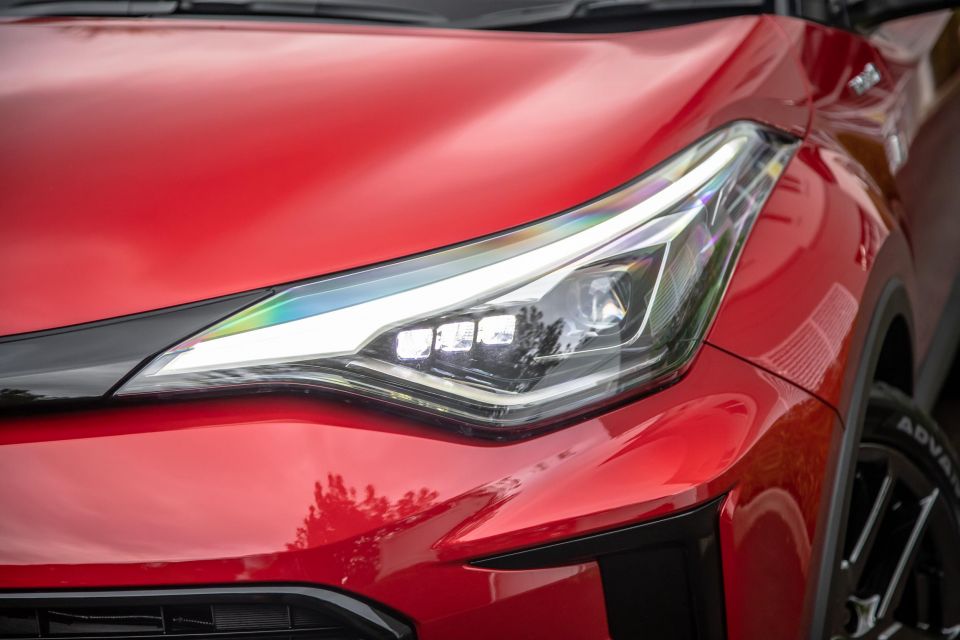



GR Sport highlights:
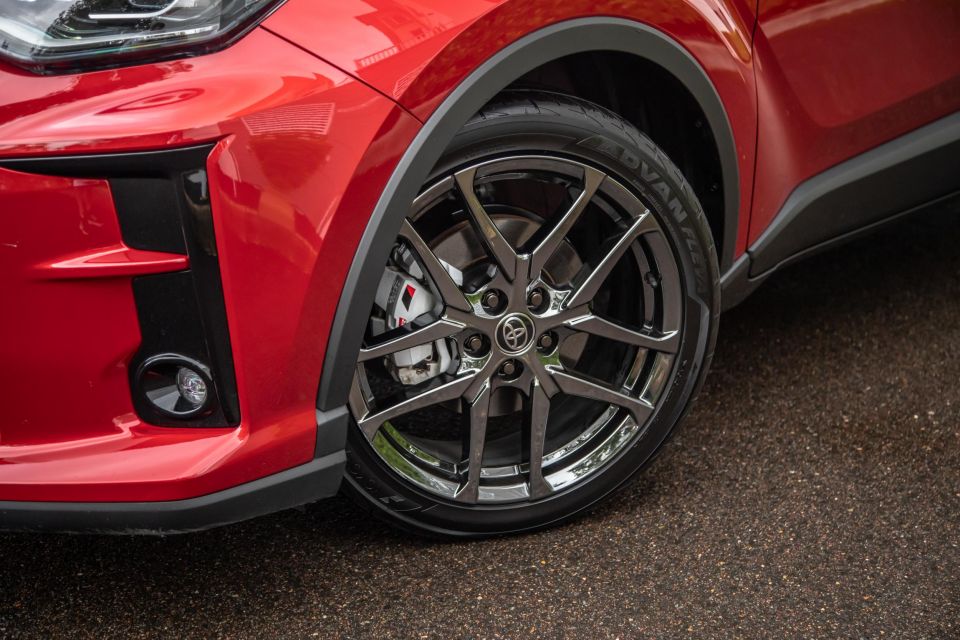
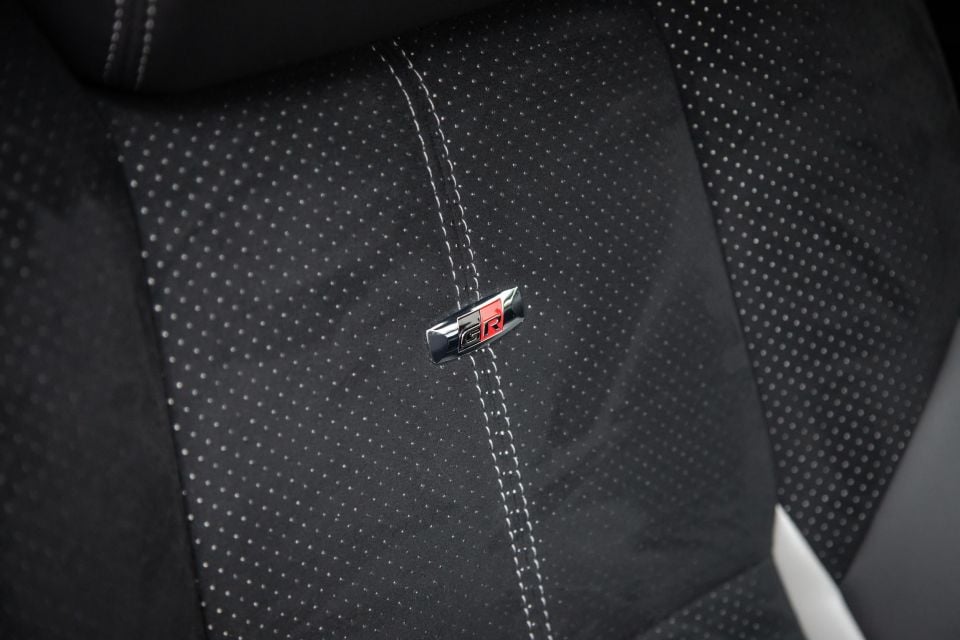
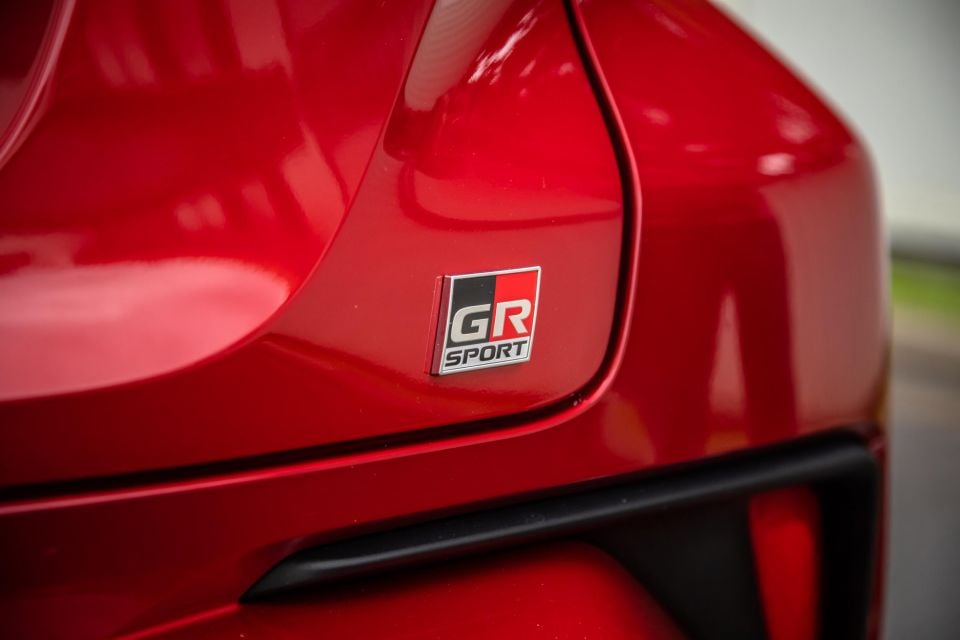
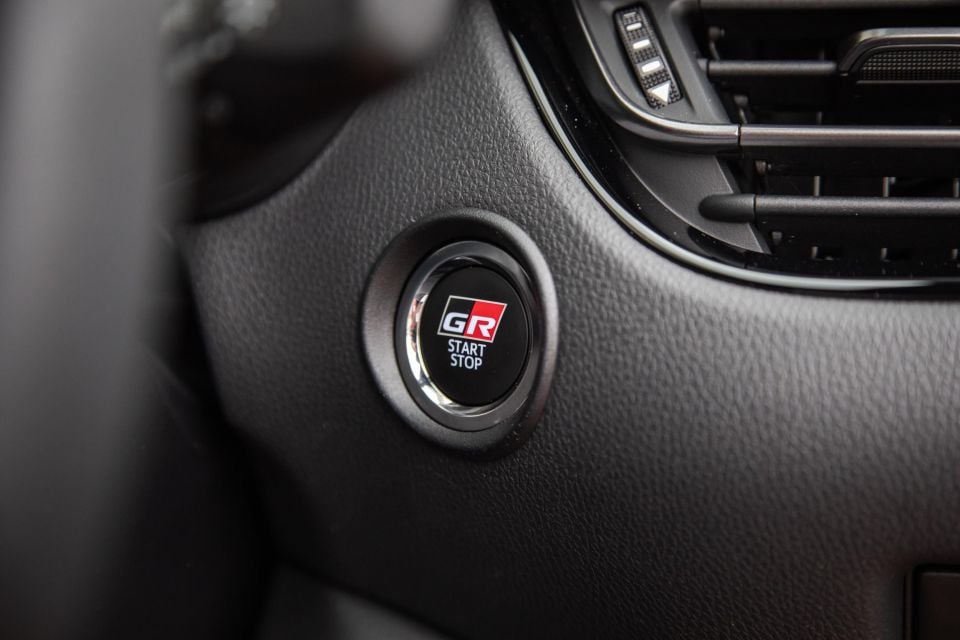
Where expert car reviews meet expert car buying – CarExpert gives you trusted advice, personalised service and real savings on your next new car.
The C-HR GXL the GR Sport is based on includes:
The GR Sport does however, omit the GXL-grade’s front and rear parking sensors.

The C-HR scored a five-star ANCAP safety rating based on tests conducted in 2017 by Euro NCAP.
It brings ratings of 87 per cent in adult occupant protection, 77 per cent in child occupant protection, 65 per cent in vulnerable road user protection, and 68 per cent in safety assist.
Standard safety features include:
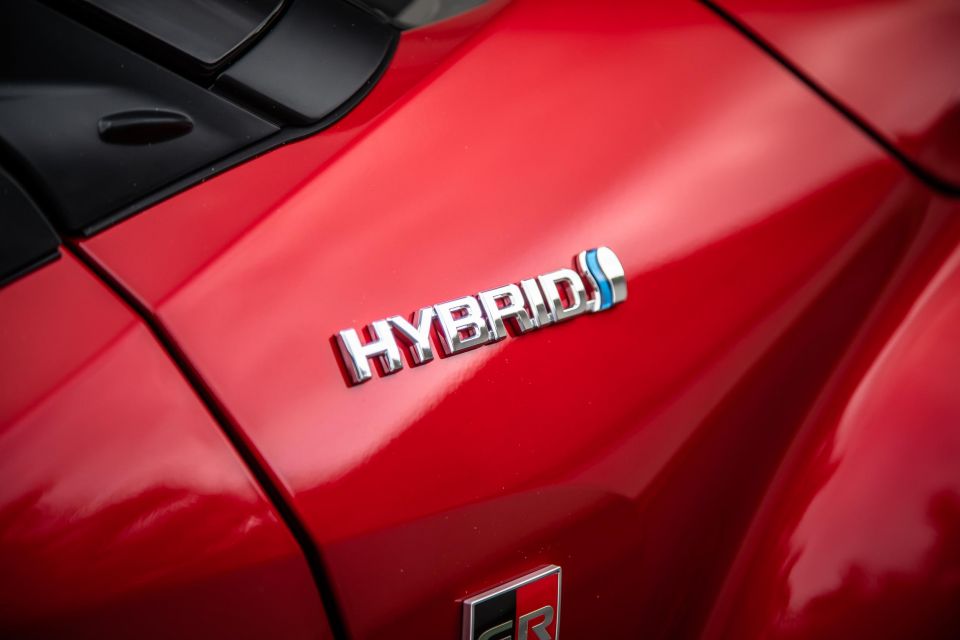
The C-HR range is covered by Toyota’s five-year, unlimited-kilometre new vehicle warranty. The hybrid system’s battery is guaranteed for up to 10 years conditionally that regular servicing is maintained.
Service intervals are every 12 months and 15,000kms, whichever comes first. Each visit is capped at $200 for the first five years – which is very thrifty indeed.
Real-world consumption against its 4.3L/100km claim is somewhat dependent on driving conditions as this type of hybrid system typically pays highest dividends around town.
That said, the mostly urban experience with the GR Sport yielded frugality impressively close to its importer’s claim. That it runs on crappy 91 RON also helps to keep running costs to a minimum.
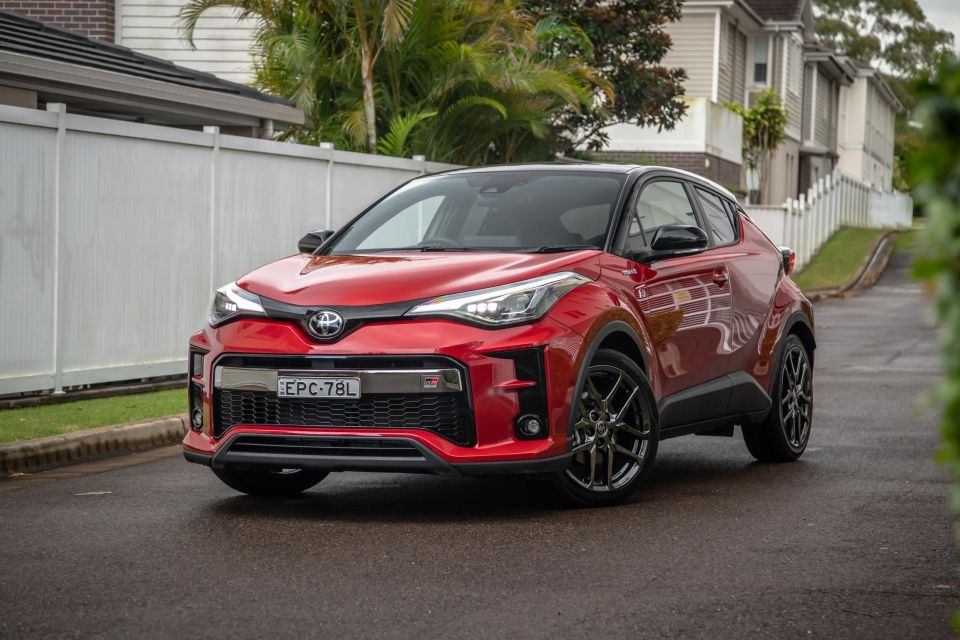
If you want go-fast looks but aren’t too fussed about genuine performance and sportiness, you’ve come to right place. Not that there’s anything wrong with that.
But if you’re sold on the concept that GR Sport brings a hotter crossover experience, be prepared for disappointment.
Different manufacturers ply different augmentation with their warmed-over nameplates. But despite its list of physical upgrades, the GR Sport improvements appear largely cosmetic.
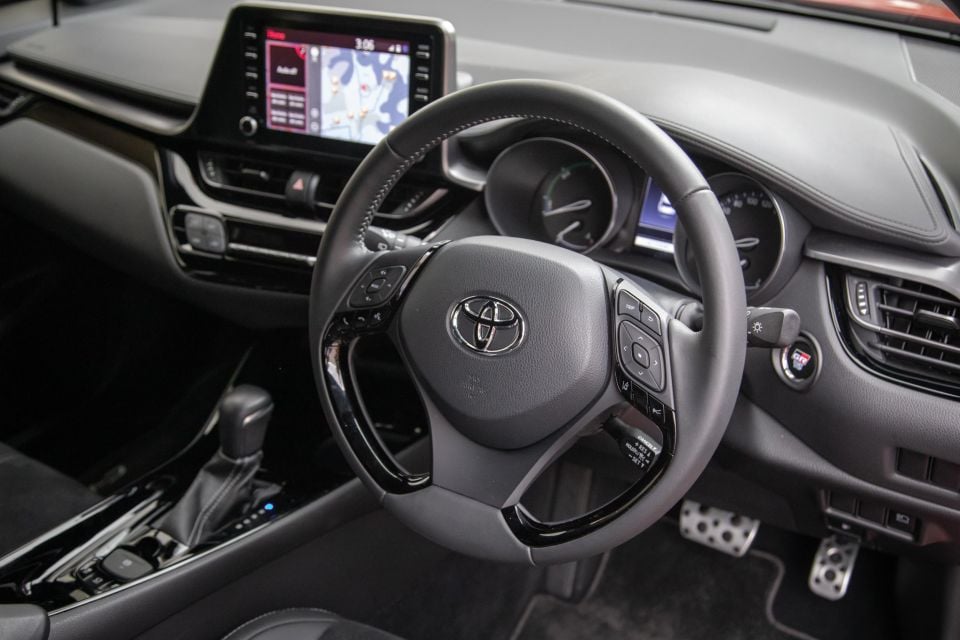
And any extra sportiness, particularly in the drive, is incremental and not really noticeable.
A foul? Not necessarily. Toyota follows a good many other marques in offering variants that look the biz but don’t up enthusiasm by any meaningful degree.
But one can’t help think that in the grand divide between an elaborate appearance upgrade and the sort of wholesale performance makeover demonstrated by Toyota’s proper GR machinery, there’s ample landscape to carve out a measurably faster, fitter and feistier variant than this.
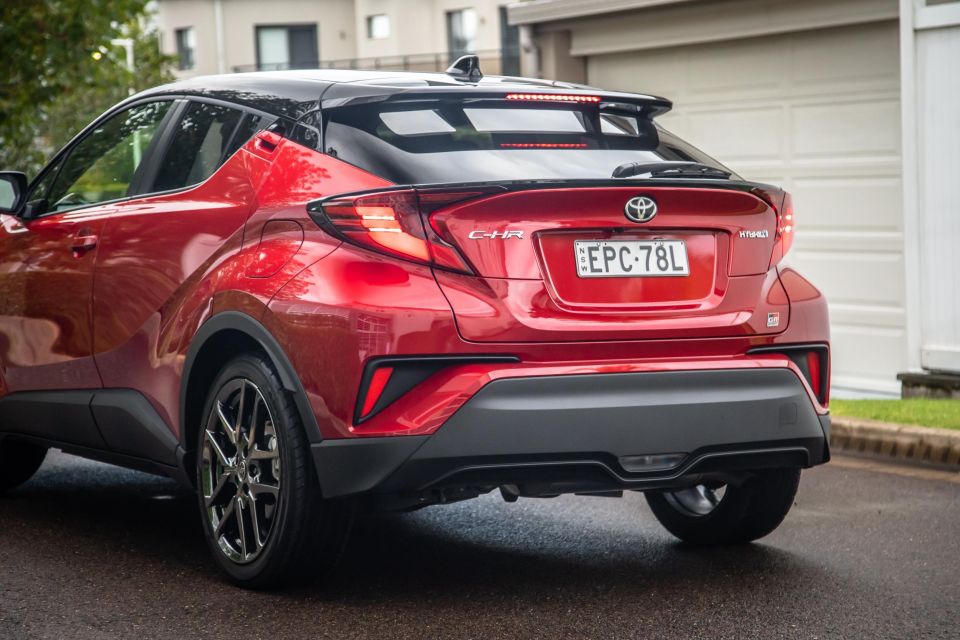
Click the images for the full gallery
MORE: Everything Toyota C-HR
Where expert car reviews meet expert car buying – CarExpert gives you trusted advice, personalised service and real savings on your next new car.


Damion Smy
15 Hours Ago


CarExpert.com.au
5 Days Ago


Damion Smy
5 Days Ago


Damion Smy
6 Days Ago


Josh Nevett
6 Days Ago


Max Davies
6 Days Ago